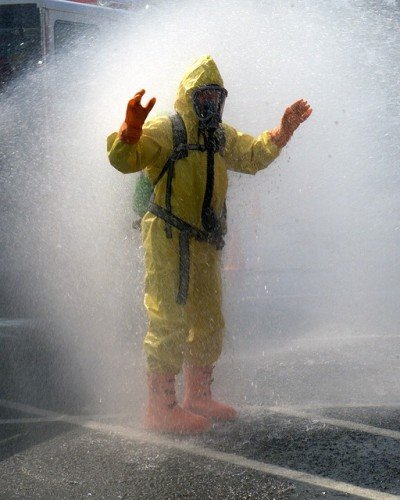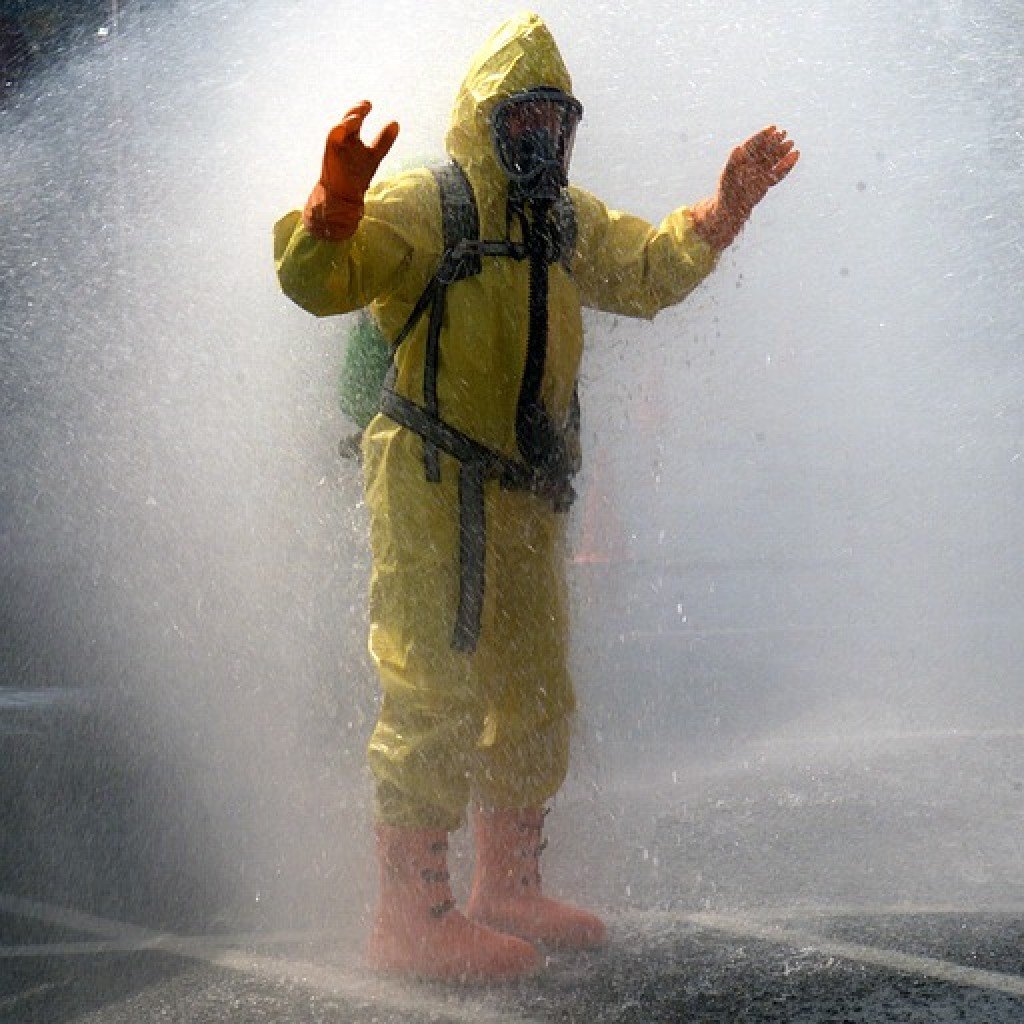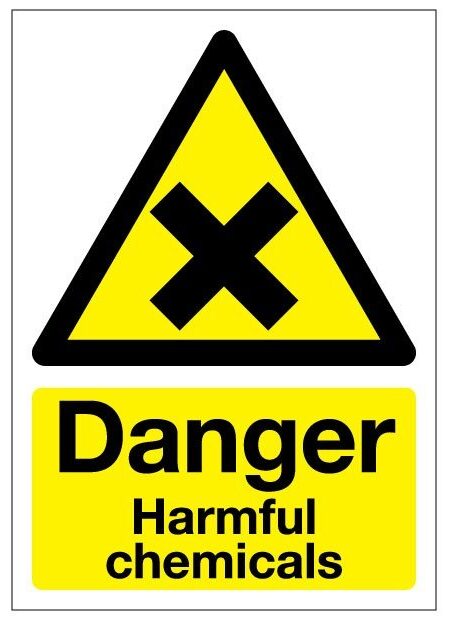 What is a Hazmat suit and why are they used?
What is a Hazmat suit and why are they used?
A Hazmat suit, short for hazardous material suit, is a whole body garment designed to protect the wearer against dangerous materials or substances. The United States Department of Homeland Security defines a Hazmat suit as “an overall garment worn to protect people from hazardous materials or substances, including chemicals, biological agents, or radioactive materials.”
A Hazmat suit is a form of personal protective equipment (PPE), which is often used by firefighters, emergency medical crews, paramedics, researchers, personnel responding to toxic spills, specialists cleaning up contaminated facilities and workers in toxic environments.
Understanding Hazmat suits
Hazmat suits provide protection from chemical agents, nuclear agents, biological agents and fire/high temperatures. Suits vary dependant on the task and the level of risk. Suits are often gas tight to ensure the user will not come into direct contact with or inhale dangerous substances. They can offer the ability to be in high temperatures due to the materials they are made out of and have different ways of supplying air to the wearer to ensure they are breathing fresh, uncontaminated air. Self-contained breathing apparatus (SCBA) can be enclosed within the suit or attached to the suit depending on the make.
Hazmat suits are rated by level or type – which directly relates to the protection the offer. In the USA the levels range from A-D and across Europe from 1-6. More information about these protection levels is available in the ‘Hazmat suits in detail’ section of this guide.
The Personal Protective Equipment at Work Regulations requires PPE to be supplied.
The Regulations also require that PPE is:
- properly assessed before use to make sure it is fit for purpose;
- maintained and stored properly;
- provided with instructions on how to use it safely; and
- used correctly by employees.
The Asbestos Removal Contractors Association (ARCA) has reported that the HSE has received a number of queries concerning the purchase and use of Type 5 coveralls. It has issued a statement as a reminder of existing guidance and advice.
Selecting Hazmat suits
Understanding your task, level of risk and environment is crucial to selecting the correct Hazmat suit. Key things to consider are:
- What am I protecting the worker from?
- Who is the worker?
- Male / female
- Height
- Weight
- Waist measurement
- Existing medical conditions
- The environment – What will their surroundings be like?
- temperature
- confined space
- explosive area
- fire
- chemicals
- patients or other persons
- mechanical stress
- flash fire
- What is the task they are undertaking?
- how long will they need to be in the suit without breakthrough
- is the task/ situation high, medium or low risk
- will the worker be required to climb over and under objects
- will they be working a lot with their hands
- are they dealing with chemicals
- are they tending to a patients
- will they be carrying heavy objects
- The class or level of suit required for the job:
- In the USA suits are classed level A,B,C or D
- Across Europe suits are classed type 1,2,3,4,5 or 6 (See more in the type of Hazmat suits section below)
- Other things to consider
- Will breathing apparatus be worn inside or outside of the suit
Types of Hazmat suit in detail
In Europe suits are classed by type number 1 -6:
- Type 1 – Protects against liquid and gaseous chemicals. Gas tight. More or less equivalent to US level A.
- Type 2 – Protects against liquid and gaseous chemicals. Non gas tight. More or less equivalent to US level B.
- Type 3 – Protects against liquid chemicals for a limited period. Liquid tight.
- Type 4 – Protects against liquid chemicals for a limited period. Spray tight. More or less equivalent to US level C.
- Type 5 – Protects against liquid chemicals for a limited period. Only covers body partially. More or less equivalent to US level D.
- Type 6 – Protects parts of body against liquid chemicals.
In the United States suits are classed by levels A – D:
- Level A – Vapour-tight, providing total encapsulation and a high level of protection against direct and airborne chemical contact. They are typically worn with a self-contained breathing apparatus (SCBA) enclosed within the suit. If there is a possible threat to life and health from incidents such as clean up from a chemical spill, Level A protection is required. Level A Hazmat gear protects against vapours, gases, mists, and splashes, so it must be gas-tight, vapour-tight, and splash resistant to offer protection against dangerous chemicals or other materials. Level A Hazmat suits require a gas-tight suit, positive-pressure SCBA, chemical-resistant inner and outer gloves, and chemical-resistant boots with steel toe and midsole.
- Level B – Not vapour-tight and thus provide a lesser level of protection. Level B suits are worn with an SCBA, which may be inside or outside of the suit, depending on the type of suit (encapsulating or non-encapsulating). It provides protection against hazardous chemical splashes but does not provide protection against vapour or gases. Level B protection requires SCBA or positive-pressure supplied air respirator with an escape SCBA. In addition, it includes chemical-resistant clothing, gloves, and boots with a steel toe and midsole.
- Level C – Includes coveralls or splash suits providing a lesser level of protection than Level B and are typically worn with a respirator or gas mask only. Most firefighting clothing is level C. Level C is for protection against known hazardous chemicals and airborne substances, but not chemical emergency situations or potentially oxygen-deficient environments. Level C requires similar garments to Level B. Instead of an SCBA, an air-purifying respirator is sufficient. Level C equipment also includes a hard hat and disposable, chemical-resistant outer boots.
- Level D- Does not constitute a ‘Hazmat suit’, requiring only specific work clothing and eye (splash) protection. Normal work uniform with no respiratory protection. Level D offers the lowest level or protection, and it is typically worn when there is no danger to workers from chemical exposure. It includes a pair of coveralls and chemical-resistant footwear with steel toe shoes and midsole.
Other options when choosing suits:
- Fully Encapsulated Gas Tight Suits
- Non Encapsulated Gas Tight Suits
- Reusable
- Limited use
- Disposable
- Rear / front entry
- Ebola Hazmat suits
- For training purposes only.
Additions and accessories to consider:
Think about what else the user will be wearing with the suit, what they may be carrying and if the specific task requires a specific material of suit or if there are any other further requirements. For example, consider:
- ventilation systems;
- radios;
- lights;
- anti-fog visors;
- height adjustment;
- types of seam (sewn, bound, heat sealed etc);
- Kevlar over-glove gloves and glove liners;
- flame retardant self-extinguishing material;
- gas tight fit for safety gloves and boots and socks;
- what material is the suit made out of and the visor;
- if the suit will work with a range of boots and remain gas tight;
- the type of breathing apparatus required;
- the correct footwear for the environment;
- ergonomics;
- cooling vest; and
- optional connectors to extend decontamination phase.
Donning and doffing – getting the suit on and off
Different Hazmat suits have different ways of donning and doffing, or taking them on and off. Due to the high risk hazard of the works often surrounding Hazmat suits procedures must be adhered to. It is essential to understand these procedures and check that workers are given the correct information, instruction and training before they put on and take off Hazmat suits.
Good quality products will have clear instruction on safe and correct donning and doffing.
Ensure:
- you buy products that have clear instructions;
- that any videos showing procedures are viewed by all relevant people before donning and doffing;
- there are consistent procedures throughout the workforce;
- that the process is supervised, where necessary; and
- that a doffing partner is available when needed.
A lot of Hazmat suits will require an additional person to help the wearer get dressed and undressed (including cleaning and decontamination). If you have limited team members consider this when buying Hazmat suits and chemical protection PPE.
Cleaning, disinfecting and maintaining the suit
When purchasing Hazmat suits and any coveralls is vital that you understand the exact cleaning, disinfecting and maintenance procedures that are associated with that product – as processes vary vastly. Hazmat suits will often be sold with a life span, so it is important to make note of this when they are bought.
Note:
- is the suit reusable or disposable;
- how it needs to be cleaned and disinfected;
- how it can be stored;
- any sections or accessories that need to be disposed of;
- the lifetime of the suit; and
- if the suit can be sent for repairs.
It is also vital to maintain shoes that are worn with Hazmat suits. Discolouring, swelling, breaks, cracks, holes, or other surface degradations such as tears should be observed.
When soles become worn traction may be reduced. Slips and trips in high hazard areas can be serious so shoes must be maintained.
How to evaluate suppliers / manufacturers
Consider:
- Established distributers
- Recommendations from within your network
- Does the supplier provide equipment with the CE mark?
- Certification
- Do products display relevant EN codes?
- Do products have a warranty?
- Do products come with informative leaflets showing how to use the PPE safely?
- Is the supplier part of the Registered Safety Supplier (RSS) Scheme?
Does one size really fit all? Meeting the needs of your diverse workforce
When buying Hazmat suits for your workers, check:
- how many sizes the suit comes in;
- maximum height limits;
- if the suit has integrated waist belts;
- the recommended sizing charts which will show whether you should chose XS,S,M,L,XL,2XL,3XL,4XL depending on weight to height ratios; and
- the differences in sizing charts for encapsulated and non-encapsulated suits.
Conforming to International standards
Because Hazmat suits and chemical protective clothing are used within a range of industries there are many international and industry standards to conform to.
International standards, certification and CE marking:
When buying Hazmat suits in Europe, EN certification is required, while in the United States and Canada, NFPA is the primary certification standard for protective suits and equipment. In Hazmat suits EN 943 and NFPA 1991 are the main international certifications.
EN 943 standard covers protective clothing against liquid and gaseous chemicals, including liquid aerosols and solid particles with a specific section EN 943-2 dealing with chemical protective suits for emergency responders and firefighters.
The highest level of certification available in North America, NFPA 1991 specifies the minimum design, manufacture, and performance requirements for vapour-protective ensembles and individual elements for chemical vapour protection. NFPA 1991 certification sets standards for chemical permeation, vapour tightness, flame resistance and material durability. In addition, NFPA 1991 includes optional criteria for chemical flash fire escape and liquefied gas protection.
After 30 June 1995, all PPE placed on the market in EU Member States was required to comply with the requirements of Directive 89/686/EEC and carry the CE Marking.
Industry standards:
The International Convention for the Safety of Life at Sea (SOLAS) is an international maritime safety treaty. It ensures that ships flagged by signatory States comply with minimum safety standards in construction, equipment and operation. The SOLAS Convention in its successive forms is generally regarded as the most important of all international treaties concerning the safety of merchant ships.
Before buying a Hazmat suit you should find out if there are any standards that affect your industry.
Conclusion
Below is a summary of the key points for consideration when buying a Hazmat suit:
- Select the correct Hazmat suit for your users, task, hazard level and environment. Ensure suitable and sufficient risk assessment.
- Ensure the suit you by is the correct rating for the task.
- Ensure that all staff understand how to use their PPE correctly and have had full information, instruction and training in their Hazmat suit use.
- Consider industry requirements e.g fire, chemicals or medical.
- Make sure any PPE you buy meets requirements, standards and regulations.
- Ensure you use a reputable manufacturer.
- Where possible try before you buy and encourage user groups and feedback forums.
- Get the right balance of cost vs quality. Hazmat suits range hugely in price – often this is because of the material they are made out of and the rating levels. As with all areas of safety it is a matter of your risk level and selecting appropriate equipment. The higher the level of risk, the higher the quality of protection needed. This in turn may lead to a higher price.
- Comfort is key to getting workers on board with using PPE correctly.
- Always consider seeking advice from your peers, reading reviews and asking for recommendations
- Buying in bulk can be more economical. Always check how many suits there are to a case, and if that works out as value for money.
- Hazmat suits can save lives. Only ever buy products that meet industry safety standards, that you feel comfortable using and that come with full instructions.
Further information
- http://www.cbrneworld.com/news/certified_safety_understanding_en_and_nfpa_standards_for_chemical_protectiv#axzz3mT4VDu5P
- https://en.wikipedia.org/wiki/Hazmat_suit
- http://Hazmat-suit.com/Hazmat-suit-buyer-guide/
- http://www.independent.co.uk/life-style/health-and-families/ebola-outbreak-what-is-a-Hazmat-suit-9802377.html
- http://www.bbc.co.uk/news/world-us-canada-29628834
- https://ohsonline.com/Articles/2015/03/01/Hazmat-Protection-from-Head-to-Toe.aspx
- http://multimedia.3m.com/mws/media/433597O/ce-marking.pdf
- http://www.ppe.org/product-testing-ppe-ce-marking/
- http://www.hse.gov.uk/pubns/indg174.pdf
- http://www.ce-marking.org/directive-89686eec-PPE.html






I miss a mention of the need to ensure you have a suitable health surveillance system in place. If you consult the Approved Code of Practice for COSHH, 6th edition, you will see that where reliance is placed on PPE, even just chemical protective gloves, health surveillance is required (Paras 237 and 238 in particular).